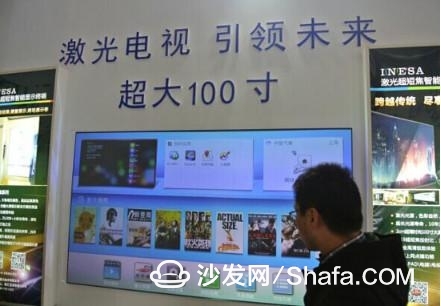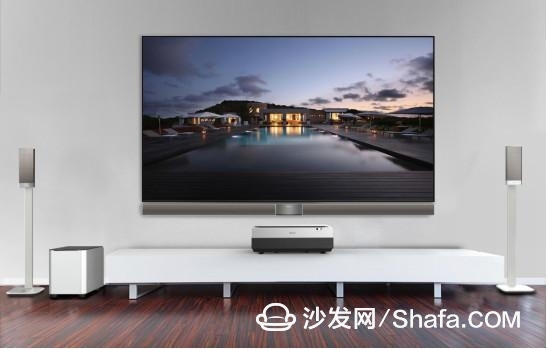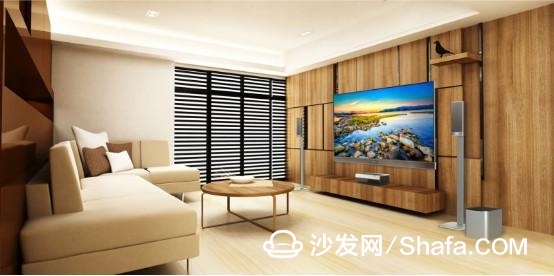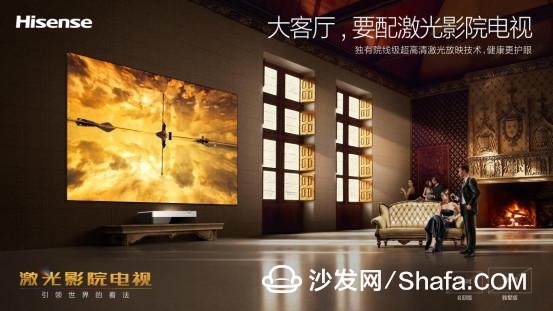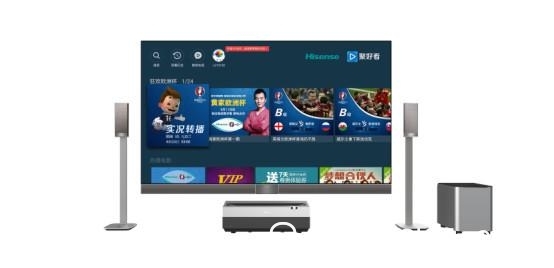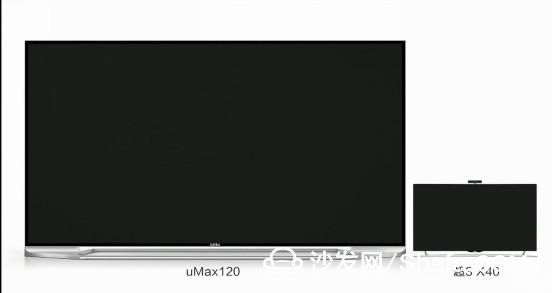Thanks to the spring breeze of the European Cup, Hisense’s sales in the French market have tripled. Hisense has become a very wise choice for this European Cup sponsor. The huge amount of exposure has been transformed into sales volume at an alarming rate, which has made this old and established TV maker earn money. Of course, the excellent quality and excellent technology of Hisense TV are also among them. At the time of overseas complacency, Hisense was even more bubbling in China.
On the 7th of this month, Hisense officially announced the world's first DLP ultra-short-focus 4K laser cinema TV in Qingdao, which also marks the official launch of the global laser display technology into the 4K era. Perhaps you are very vague about the concept of laser television. Today, Xiao Bian took this opportunity to chat with everyone.
1. What is laser television
From the initial CRT TVs to the mainstream LCD, LED, and PDP flat-panel TVs today, to OLED TVs dominated by companies such as Samsung, Changhong and TCL, this traditional home appliance has undergone three generations of development. As the standard of the fourth generation of television, laser display technology is changing the entire industry in an imperceptible manner.
Laser television is the use of semiconductor-pumped solid-state laser working substance, generating red, green, and blue wavelengths of continuous laser as a light source for color laser television, through the television signal control three-color laser scanning images, to achieve visual TV.
Compared to the current mainstream LED TVs, laser TVs have higher color saturation and wider color gamut coverage. And the picture of laser television looks more real, layered, and transparent. Since lasers are used as backlights for televisions, this also makes laser televisions even thinner, which is more suitable for use by small-sized home users, and has an extremely wide viewing angle and is not affected by directionality. At the same time, the laser television also overcomes the uncomfortable feeling caused by the long-term viewing of the fluorescent colors produced by the human eye and zero radiation to the human eye. Therefore, laser television is also the only display product in the world that satisfies theoretical visual requirements and is harmless to the naked eye.
2. Development status
As a new concept of laser television, foreign developed companies have started production and research and development very early. As early as 2006, Mitsubishi Corporation of Japan introduced a 40-inch laser TV. Subsequently, Sony, LG, Samsung and other companies also joined the competition. With the launch of Mitsubishi's 65-inch, 73-inch laser TV in the US market in 2008, this marks the official arrival of fourth-generation TV display technology.
Compared with the industrial development of laser TVs for foreign companies, domestic brands have not fallen behind. Since Hisense first introduced laser theater products in 2014, domestic manufacturers such as Changhong have also followed suit. At the same time, new brands such as Hualu, Xuan Screen and INESA have also joined the camp of laser TV. At the same time, the Ministry of Science and Technology has also introduced relevant policies to guide and support the industrialization of laser display in China.
At present, laser display technology is in the early stage of industrialization. International companies have not formed a monopoly in technology and patents. This has left sufficient room for the development of laser display technology in China. However, over the past two years, too many brands have joined the show, showing that the domestic laser TV industry has low barriers to entry, no core technology, and product homogeneity.
3. Hisense's contribution
As a veteran TV manufacturer in China, Hisense has decades of television production, design, and R&D experience, which has laid a solid foundation for its earliest involvement in the domestic laser television industry. This time, Hisense introduced two laser televisions, the world's first DLP ultra-short-focus 4K laser cinema TV and the industry's first 88-inch laser cinema TV.
Unlike emerging brands that have not accumulated technology, Hisense’s launch of 4K laser cinema television can be said to have taken the lead in the world. Compared with traditional 4K LCD TVs, Hisense 4K laser TVs use more efficient light, consume about 1/3 the power of similar-size LCD TVs, and have 370 times faster response speed than LCD TVs, especially 100-inch 4K laser theaters. The price is only 79999 yuan, about 1/10 of the similar size LCD TV.
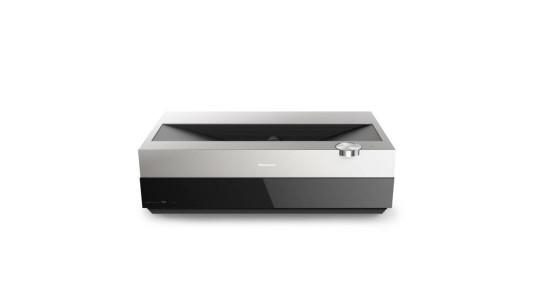
In terms of technology, the optical engine of this 4K laser TV is completely developed and manufactured by Hisense. The key components under the optical engine, such as the light source, lighting, and lens, are also completely independent. At the same time, Hisense 4K laser cinema TV also broke through the world's three major technical difficulties, the use of high-processing optical engine to improve processing capacity to 2 times the 3K laser TV products, but also to make 4K lens optical resolution per millimeter The rate of 186 beams. What is more worth mentioning is that Hisense has increased the 4K laser cinema TV manufacturing process and machining process to the limit.
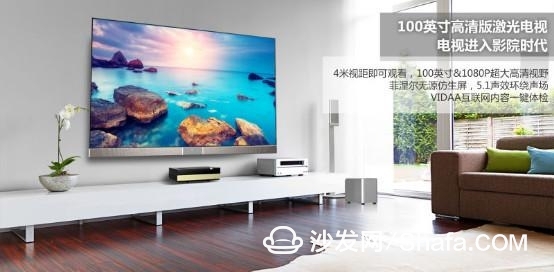
Compared with other brands, the technology of Hisense laser cinema TV is indeed at the forefront. However, no matter how good the hardware needs to be filled with content, in this regard, Hisense has set an example for the friendly business. Its laser cinema TV not only has Internet TV function, but also built-in VIDAA intelligent control system, with 15,000+ movies, 150,000+ episodes, 73000+ episodes, and variety, animation, sports, documentary and other resources. The cumulative video duration exceeds 100. Million + hours, rich content resources make laser television truly become a never-ending private theater. While some brands have not enriched their content while trying to match cost-effectiveness and heap hardware, the combination of hardware and software is really a good product.
4. Future market prospects
Big is the core direction of color TV in the future. 32-inch is the mainstream TV size six years ago. In 15 years, 55-inch products have become mainstream. At present, domestic Internet brands LeTV and Xiaomi are still leading this negative development. LeTV also launched an embarrassing 120-inch product, but the price is up to 500,000 pounds, which is equivalent to 7 times the price of Hisense 4K TV. At present, the LED display technology is already in the bottleneck period. Now the LCD panel production line has been upgraded to the 8.5 generation line and the 10th generation line. The production process of LCD TV panels will become more complicated, and as the size increases, the average price of consumers will not May be affordable.
The arrival of laser television in the market in 2014 triggered a long-delayed industry. According to relevant data, the number of laser TVs sold in the first half of 2015 has exceeded the total sales of LCD TVs with 100-inch and above in the past 10 years. From this perspective, laser television will be the mainstream of future television. Laser TV does not limit the screen size, high color gamut, price, display harmless to the human eye and other advantages, but also is currently an urgent need for consumers of large-screen television.
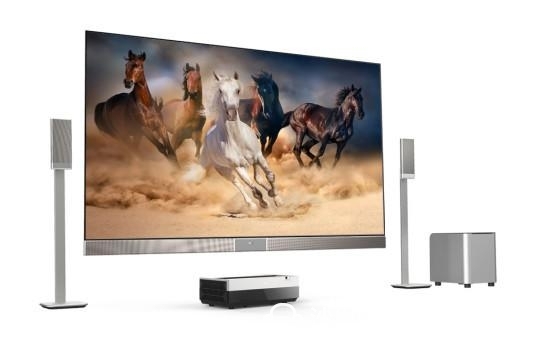
Big is the core direction of color TV in the future. 32-inch is the mainstream TV size six years ago. In 15 years, 55-inch products have become mainstream. At present, domestic Internet brands LeTV and Xiaomi are still leading this negative development. LeTV also launched an embarrassing 120-inch product, but the price is up to 500,000 pounds, which is equivalent to 7 times the price of Hisense 4K TV. At present, the LED display technology is already in the bottleneck period. Now the LCD panel production line has been upgraded to the 8.5 generation line and the 10th generation line. The production process of LCD TV panels will become more complicated, and as the size increases, the average price of consumers will not May be affordable.
The arrival of laser television in the market in 2014 triggered a long-delayed industry. According to relevant data, the number of laser TVs sold in the first half of 2015 has exceeded the total sales of LCD TVs with 100-inch and above in the past 10 years. From this perspective, laser television will be the mainstream of future television. Laser TV does not limit the screen size, high color gamut, price, display harmless to the human eye and other advantages, but also is currently an urgent need for consumers of large-screen television.
Smart TV/box information can focus on smart TV information network sofa butler (http://), China's influential TV box and smart TV website, providing information, communication, TV boxes, smart TVs, smart TV software, etc. Answering questions.
Gas Generator
Gas generator assembly by gas engine, alternator, radiator, controller, base frame;
. World Famous diesel engine brand: Cummins, Perkins, MTU, MWM, GE, SWT
. World famous AC alternator brand: Stamford, Leroy Somer, Mecc Alte, Marathon, Faraday, SWT
. World famous genset controller brand: Deepsea, ComAp, Deif, SmartGen, Motortech
. Gas Control System: Ignition system, Gas Throttle System, Ga Mixer System, Gas Train Valve System
. Start Battery system
. Optional for Remote Cooling system with CHP & CCHP Control
. CHP- Combine with Heat and Power Electrical system
.CCHP- Combine with Cold, Heat and Power electrical system
Gas Generator,Gasoline Generator,Biogas Generator,Natural Gas Generator
Guangdong Superwatt Power Equipment Co., Ltd , https://www.swtgenset.com

